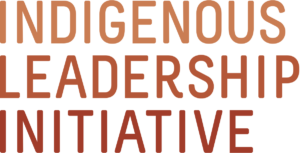Indigenous Women Leading on the Land
Nuxalk First Nation along the Pacific Coast. Photo: ’Qátuw̓as Brown
By Valérie Courtois
March 28, 2022
The Honourable Ethel Blondin Andrew has carried lessons from her grandmother throughout her storied career. “My grandmother was a fearless woman who stood toe-to-toe with anybody,” Ethel recently explained. “She would say, ‘Do not be afraid, my girls, there is nobody better than you.’ That’s what I took to residential school. My grandmother would say, ‘You are just as good as anyone in this world.’ I brought those words from the United Nations to Parliament.”
“My grandmother secured a place for me,” she said.
Indigenous women have long been leaders, healers, and wayfinders in our communities—caring for our people, lands, and waters for millennia. That tradition continues in the modern guardianship movement.
Of the 23 proposed Indigenous Protected and Conserved Areas that ILI partners on, two-thirds are led by women.
Nearly half of the over 80 existing Indigenous Guardians programs in the country are led by women.
We are at the forefront of honouring the responsibility to lands, and this stewardship is helping strengthen our Nations.
To do this important work, we look to our grandmothers, aunties, mothers, sisters, and friends. I am inspired by my grandmother, Albertine Gill Courtois born in 1917. She wasn’t allowed to go past grade 5 in residential school, so she decided to do it over 5 times and decided teaching because she loved learning so much. Many years later, she became the first social worker in the Innu Nation. She was tiny but mighty, and I draw strength from her strength.
Ethel and I shared about our grandmothers during a recent panel about Indigenous women caring for lands and waters. Called The Trailblazers of Conservation, it kicked off a series about Indigenous women’s leadership hosted by the Conservation Through Reconciliation Partnership, IISAAK OLAM Foundation, and Indigenous Leadership Initiative. Here are some of the themes that emerged.
Délı̨nę in the Sahtu region of the NWT. Photo: Pat Kane
Learning from Other Women
Many of the speakers said they learned about caring for lands and waters from the women in their lives. Bev Sellars, author, historian, former chief of the Xat’sull First Nation, and senior leader with ILI, shared that when she was in so-called residential school, she spent summers on the land with her grandmother. Her values and teachings about cleaning up after fishing or shooting only what you eat stayed with Bev. “You learn those lessons as a child, and when you become a leader, you remember those things.”
Bev also draws inspiration from Berta Caceres, a Lenca woman from Honduras. She was assassinated for her environmental and social justice advocacy. Bev’s community has felt the impacts of unchecked mining, and she reminded the audience that the challenges Berta faced in Latin America play out in Canada too. Indigenous women are rising up to protect lands and communities. “I am Berta,” Bev said. “You are Berta. We all need to be Berta.”
Stewardship and Identity
Women are often at the heart of knowledge transfer in our communities, and several leaders spoke about the role women play in ensuring the linkages between land and identity are carried on. Stephanie Thorassie is the director of the Seal River Watershed Alliance. In the 1950s, her community of Sayisi Dene was loaded onto airplanes and forcibly relocated to Churchill, where many suffered systemic racism, crushing poverty, and death.
“I think about the women before us who did this work, making sure we held on despite those really terrible things that happened to us as a people—that we hung on to our cultures and languages,” Stephanie said. “I think it is part of my job to continue to share the really exciting goals we have for protecting the watershed for future generations.”
Guardian Amberly Quakegesic shared that while she didn’t grow up in her community, at the Wahkohtowin Guardians program, “I am surrounded by strong Indigenous women. I am growing my bundle and trying to get to know my culture. Tapping birch trees, building canoes. This type of knowledge is so relevant and important, and it’s given me strength to share and provide more opportunities for youth in my community.”
Guided by Love of the Land
One of the values Indigenous women bring to conservation is love: Love for our families, communities, and land. Marilyn Baptiste is a former chief of the Xeni Gwet’in First Nation and winner of the Goldman Prize for working to block a massive mine on their traditional territory. She has led tough fights against the mining industry, but it comes from love. “Being connected to the land, that’s the love I know. It goes deep and is part of healing for us.”
We thank all the Indigenous women who are fiercely sharing their love and leadership on behalf of our lands and our future generations.



